Re-imaging Villains
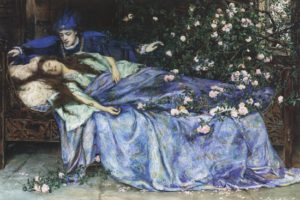 Saturday I saw Maleficent, the Disney movie about the “witch” who cursed Sleeping Beauty (blessings on dollar theaters everywhere! 😉 ). In my post last Monday I mentioned a book by Tosca Lee entitled Iscariot. In combination the two have me thinking about something that may be a trend—the re-imaging of villains.
Saturday I saw Maleficent, the Disney movie about the “witch” who cursed Sleeping Beauty (blessings on dollar theaters everywhere! 😉 ). In my post last Monday I mentioned a book by Tosca Lee entitled Iscariot. In combination the two have me thinking about something that may be a trend—the re-imaging of villains.
The idea in books like Wicked by Gregory Maguire and Iscariot and in movies like Maleficent is that there’s more to the villain of some well-known story, fact or myth, than people know. Perhaps the unknown is how the villain came to be so villainous, or it might be the redemption of the villain’s reputation—she wasn’t what the stories have made her out to be.
I suspect this idea first came to the forefront when George Lucas re-imaged his own villain, Darth Vader, by making the young Anakin the hero of the second Star Wars trilogy.
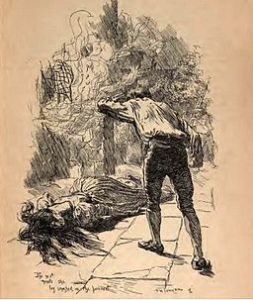 At any rate, this re-imaging holds innumerable possibilities for writers to look at old stories and create backstory for the villains, explaining who they became and why. Why not a story about the Big Bad Wolf and how he came to be the terror of Red Riding Hood and her family? Or what about a story telling how the first Mrs. Rochester in Jane Eyre by Charlotte Bronte became the woman locked in the tower. Or how about one recounting Goliath and his road to become the champion of the Philistines facing off against the lad David?
At any rate, this re-imaging holds innumerable possibilities for writers to look at old stories and create backstory for the villains, explaining who they became and why. Why not a story about the Big Bad Wolf and how he came to be the terror of Red Riding Hood and her family? Or what about a story telling how the first Mrs. Rochester in Jane Eyre by Charlotte Bronte became the woman locked in the tower. Or how about one recounting Goliath and his road to become the champion of the Philistines facing off against the lad David?
While I see the nearly unlimited possibilities of refreshing stories by making the villain the protagonist, I have to wonder about the wisdom of doing so. It seems to me that choice has possible theological ramifications.
In many respects stories written today are already falling into theological error. In fact, writing teachers set out the importance of following a perspective that contradicts Scripture—that humankind is good, even the most heinous villain.
The reasoning is that villains, if shown only as wicked monsters, will become caricatures and not well-developed characters. Hence, writers are advised to give antagonists “pet the dog” moments which show that the serial killer or assassin or pedophile or wife beater isn’t all bad.
It seems to me that re-imaging villains simply expands this fundamental concept—there’s good in all of us, so what we perceived to be a character’s evil actions have a cause or are misunderstood. If we only knew the whole story, from the side of the loser instead of the side of the winner, we’d see the good or understand the motives or sympathize with the decisions.
The problem, as I see it, with this kind of thinking is that evil is in the eye of the beholder. In fact, there really is no evil—just evil circumstances or evil influences.
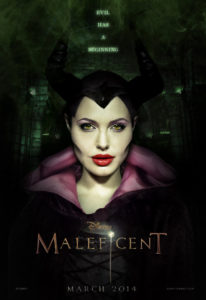 So in Maleficent, [SPOILER ALERT] Stephan wasn’t evil. Rather, he was influenced by the greed of the kingdom in which he lived. In fact, when he went to kill Maleficent, he actually spared her life because he wasn’t at heart evil. But afterward he was haunted by the agony he caused her by stealing her wings, and he was terrified of her revenge. [END SPOILER ALERT]
So in Maleficent, [SPOILER ALERT] Stephan wasn’t evil. Rather, he was influenced by the greed of the kingdom in which he lived. In fact, when he went to kill Maleficent, he actually spared her life because he wasn’t at heart evil. But afterward he was haunted by the agony he caused her by stealing her wings, and he was terrified of her revenge. [END SPOILER ALERT]
So even in the re-telling, though there certainly felt as if there was a new villain, he was “explained.”
I can’t help but wonder if this re-imaging isn’t a way of turning evil into good. Contemporary western society has moved away from the concept of a human sin nature. In fact, I’ve encountered people who think the greatest evil is to tell people they have a bent toward sin.
Might not this trend toward re-imaging villains, then, be nothing more than a demonstration that people are not bad?
Not so long ago, a pastor at my church preached a sermon in which he said, No one wants to wake up one morning and realize he’s defrauded people and turned them into slaves because they couldn’t meet their debts. I thought that was so odd. I doubt Hitler would have lost any sleep over knowing how he’d harmed Jews, or Stalin, how he’d harmed anyone who opposed him, or the revolutionaries in France who slaughtered the gentry. That’s just scratching the surface of all the people through history that demonstrate an evil bent.
Does that mean those who act on their evil bent can’t or don’t do good things from time to time? Certainly not. Hitler was apparently good to Eva Braun. But could his story be re-imaged in such a way that his heinous deeds would be anything but heinous? I don’t think so. Unless somehow we call heinous, heroic.
I’m not saying movie-goers or readers should throw away their Maleficent DVD’s or burn their copies of Wicked. I am suggesting, however, that we think through what stories with re-imaged villains are saying about good and evil, then see if the Bible holds the same view.
Woe to those who drag iniquity with the cords of falsehood,
And sin as if with cart ropes;
Who say, “Let Him make speed, let Him hasten His work, that we may see it;
And let the purpose of the Holy One of Israel draw near
And come to pass, that we may know it!”
Woe to those who call evil good, and good evil;
Who substitute darkness for light and light for darkness;
Who substitute bitter for sweet and sweet for bitter!
Woe to those who are wise in their own eyes
And clever in their own sight! (Isaiah 5:18-21)
What are your thoughts about re-imaged villains?


































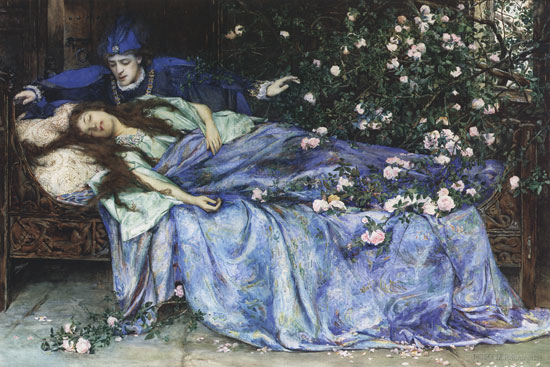
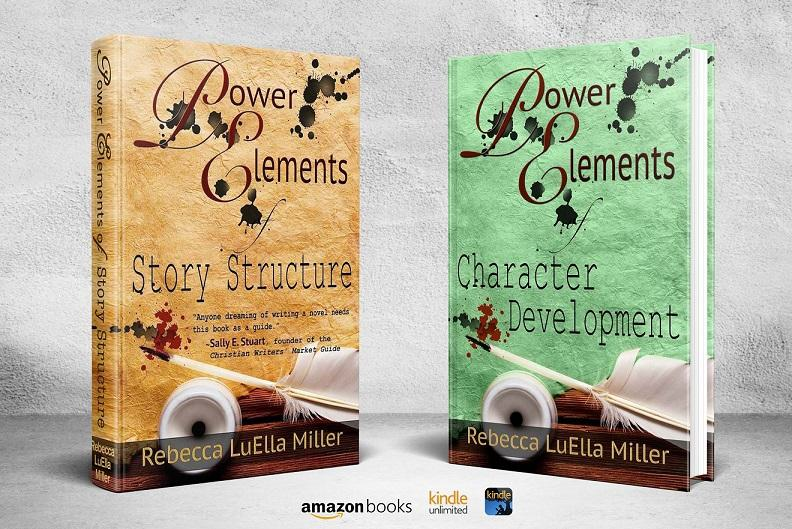
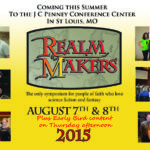







Good points. I think this is something you can’t really make a rule of, but have to look at each story on a case-by-case basis. It can get complex very quickly. I was thinking of Scrooge McDuck while writing this; he’s as much of a reimagined villain as one could get, but he flies under the radar a lot because its easier to make greed comic.
Interesting, DM. I haven’t read any Scrooge McDuck comics since I was a kid, but I didn’t think of him as a villain. Maybe because Donald and the nephews could always manipulate him into helping them when they needed it. It was the three burglars who were always trying to steal the McDuck fortune that I thought of as the villains. Wow! would be interesting to read those now and see what I thought.
Becky
Scrooge was greedy, but he was not a thief. You could say that he was sinful, but hardly a villain.
“In fact, writing teachers set out the importance of following a perspective that contradicts
ScriptureCalvinism—that humankind is good, even the most heinous villain.”Notleia, I am in no way a Calvinist, and yet I still read Romans 3:9-12 to mean, well, pretty much what it says—that we are all sinners, without our own righteousness.
Becky
“There is no one who does good, not even one.” God said that. “All we like sheep have gone astray, we have turned each one to his own way, but the Lord has laid upon him the iniquity — the lawlessness — of us all.” God said that too. You can strike out the word, but you can’t and won’t change this truth. We are all sinners at heart. That is why we all need a new one through the Blood of Christ.
Amen to you both.
Even basic secular research about this will show that it’s a core tenet of plain, “mere” Christianity — not a caricatured villain called “Calvinism” — that humans are sinful.
Observers outside Christianity often do not get this because they are led to believe that good and evil are solely issues of how human beings treat one another. Being materialist — including the kind of materialist that uses “faith” and “God” as abstract concepts to support material concerns — they don’t seem to understand the deep and basic Christian believe that humans’ sins are first against God, not other people.
Interesting thoughts, but not sure I follow the logic. According to Scripture, one could perfectly follow the Law and still experience the second death. Giving a villain good qualities doesn’t negate the effects of the fall anymore than bad qualities in the redeemed negate the grace of Christ.
And I’m not so sure showing that a villain has good qualities translates into calling evil good. Everyone has moments of good and evil. In the end, it is not that which makes one evil or good, but with their relationship with God who is the only good one.
Well, you’re right, Rick, so yes, there is an inherent weakness in my premise. I was actually aware of that as I was writing, but I thought it was worthwhile to explore the idea. I mean, what if someone some day decides to make Voldemort the protagonist of his story, explaining how he wasn’t actually evil, that his story wasn’t actually the one we had been told in the Harry Potter books. Essentially, this is a postmodern view—that we can’t really know truth because we can only see through our own situatedness. Whereas the Biblical view is that there is a right and a wrong—either a for God or against God position which we take.
There’s truth in the idea that we can’t know en toto what others experience, and when we’re discussing fiction or myth or legend, then re-imaging the characters may be doing nothing more than saying as you did, that all people are a mixed bag of good and evil.
But I see this growing belief that humankind is good and that it’s possible for us to be good and that when we aren’t good it’s primarily because we haven’t been given the education or the opportunity to be good, and I think it contradicts Scripture.
One think I liked about Maleficent {SPOILERS} is that she repented of her desire for revenge. She knew she had been wrong and recanted. But even she couldn’t undo the curse. The part that I didn’t like was actually a twist of the original “true love conquers all” theme—the love in our heart can undo evil.
Anyway, I think it’s not a bad thing to consider what these kinds of stories end up telling us about our nature.
Becky
You mean, like in Frozen?
Yeah, I get your point. And it is worth considering. Sometimes that philosophy is behind the re-imaging of villains, and thus anti-Christian in the message on human nature and the fall.
Unfortunately I didn’t see Frozen so can’t comment on that one specifically, but it’s a popular theme these days, so I wouldn’t be surprised to find it in a popular animation .
I guess I also believe it is quite logical to find writers who do not believe in God or the Bible or sin or the need for a Savior writing about how characters are good and the protagonist can find strength/truth/wisdom from within.
Becky
I don’t know that it’s accurate to say that all re-imagined villains are re-imagined as actually being good guys from a different point of view, or even defensible. It seems to me that the change in interpretation is not from evil to good but from flat caricatures to more realistic, sympathetic people. The original Maleficent and Wicked Witch of the West were little more than cackling witches, after all, with hardly any motive or explanation provided for their behavior.
Handled properly, i think this type of re-imagining is actually better from a moral perspective. If we can understand and empathize with a villain’s motives, it can be a reminder that we have the potential to become villains, that having a reason to lash out at others is not the same as having the right to do so.
And it isn’t like all villains are being re-imagined in this way, either. Plenty of recent villains have been extremely unpleasant people with little to no justification for it.
I’m definitely not saying all re-imaged villains are being turned into good guys. I haven’t read all stories so I wouldn’t have any way of knowing about the ones I haven’t read. I don’t even think turning Maleficent into a character who was different from the one we knew as the wicked witch was saying evil was good. {SPOILERS} Quite the opposite. She agreed that she had been wrong to curse Adora and even tried to reverse the curse. She wept over what she had done. It was an interesting look at a “villain.” She herself would have agreed that she was a villain, except that the story didn’t end as we know Sleeping Beauty to have ended. It was Maleficent, who didn’t believe in true love, who loved truly and broke the curse. She was a hero, not for the evil she did, but for the evil she undid.
My objection, though, Lady Arin, is to the idea that we must show evil characters petting the dog in order to turn “flat caricatures to more realistic, sympathetic people.” I don’t think we necessarily create flat caricatures just because we show an evil character to be evil and not sympathetic.
You said
I think that’s an interesting point. Yes, I can see how the story of Maleficent could bring that point out. But, as I said earlier, I don’t think Maleficent was about saying evil was good. She was never shown to be evil, but she gave in to the desire for revenge, and as you said, that can remind us we all have the potential to do things we may regret.
And you’re right about not all villains being whitewashed. The thing is, stories need antagonists and often those are villains. But what I expect we may see next is a trend toward villains being characters we would have once thought of as heroes.
Becky
You’re right. In fact, the author of one of my favorite web comics made an explicit point of having his chief villain be unsympathetically, unapologetically, unquestionably evil, with nothing in his back-story to offer a justification for his behavior.
I can understand your concerns, certainly. Personally i am very irritated at how fans and writers can be overly sympathetic because of a tragic back-story or the attractiveness of the actor/actress portraying the character. It’s part of the reason i stopped watching Once Upon a Time. It’s equally irritating when gritty anti-heroes are treated as more realistic than more traditional, honest, Captain America-types.
What i don’t understand is why, in your original post, you say:
I understand that it is possible to convey the message that no one is really bad, just misunderstood, that many people will attempt to justify their actions or those of others with such arguments, that stories can and do have an affect on our beliefs. But written badly, unsympathetic villains can lead to notions that people are either straight-up good or flat-out evil (and that as long as we do more good stuff than bad we don’t need to worry about becoming a villain), just as easily as sympathetic ones can lead us to believe no one is really all that bad. We can’t look to fiction to write our theology for us.
I can’t agree with how strongly you worded your original post. I don’t think re-imagining villains is an intrinsically bad thing. And if they do start re-imagining heroes as the bad guy, so long as it’s done by changing their actions and not just our perspective, i don’t think it will be any more or less harmful than any other trend throughout history. Something to be aware of, certainly, but we will still need to evaluate each work individually, just like we need to do with any trend in popular entertainment.
Perhaps my post came out more strongly than I actually believe. I don’t think there is a sweeping trend toward making villains good, but given the belief of our culture than humans are good, I guess I see it as a “wouldn’t surprise me if it goes this way.”
The idea of re-imagining heroes as the bad guy is straight from the news. Not so long ago when the media looked at the background of Sgt. Bowe Bergdahl, the soldier who had been held by terrorists, or who had possibly deserted to them, his association with a church that believes in heaven and hell was brought forward as a possible cause for his behavior.
Once, believing in heaven and hell was normative. Now it is considered “Calvinism on steroids.” Once, a person who had faith in God was in the “good guy” camp. Now, the belief that Jesus is the way to God ” makes extraordinary demands on a sensitive young person’s conscience and conduct.”
Then there’s this line toward the end:
So, I guess I wouldn’t be surprised to see the Bible-believing “extremist Christian” become a villain in a story one day in the near future.
Becky
LadyArin just said everything I was going to say. 🙂
The whole trend you mentioned is why I’m not planning on seeing Maleficient anytime soon and a major part of the reason I gave up on Once Upon a Time. While Lady Arin has some good points about creating well-rounded characters, I also feel that it can be taken too far.
The examples that come to my mind are Loki and Magneto (film versions). Both are villains with well-established backstories: unknown adoption for Loki, Holocaust survivor for Magneto. They have reasons for seeing humans as the enemy.
However, Loki seems to accepted as a woobie who doesn’t really mean to be bad, while Magneto remains sympathetic but evil. (I am not as aware of X-Men fandom as of the MCU, however). One reason I think Magneto remains unquestionably a villain is that his team-ups with Professor X end in betrayal
SPOILERS
X1: he plans to use an innocent girl to forcibly turn people into mutants. The process will kill her, and a trial run killed the person he forced to mutate.
x2: when he finds a brainwashed Professor X who is killing mutants, he does not turn off the process, but switches the target to humans.
END SPOILERS
Julie, I actually think you might like Maleficent. It’s not about justifying an evil character’s actions as much as it is re-writing the myth. She never was evil to begin with, though she did an evil thing for which she later grieved. It was interesting. Not the same as Wicked, I don’t think. Unfortunately I don’t know the others you mentioned, so I can’t comment on them.
But I will add this about making characters three dimensional. I’ve said for some time, it’s not about balancing evil out with some good action but in properly motivating the evil. Honestly, Maleficent created another caricature in the opening scene because it should your standard greedy king who wanted the wealth of the land under the control of the fairies. So he’s motivated by greed because . . . well, all kings are greedy, I guess.
Anyway, a very interesting discussion. Thanks for joining in.
Becky
Exactly. Trailers and such were apparently unsure how to market this story as a reimagining, a revision, of the classic fairy tale. So the impression got about that this was intended to be even a partial adaptation of the story. It’s not: it’s a wholly different universe, as much an “elseworld” version of Sleeping Beauty as the recent Noah film was an “elseworld” version of the Bible’s historical narrative.
Becky, you have touched on a subject after my own heart. It has long been a maxim of mine that there is a vast difference between moral complexity and moral ambiguity. I have absolutely no problem with a sympathetic antagonist, or a character whose motivations seem right to him/her but are in opposition to the protagonist. What I have a problem with is the refusal to acknowledge the reality of genuine evil. We live in a world that is the direct result of the notion that the people doing such vile and despicable acts on a global scale are in fact only misguided or misunderstood, and that the correct amount of understanding will end their behavior. Now, don’t get me wrong; I do believe we should try to understand the enemy. I think we should know exactly what makes people tick, and the difference between a sociopath, a psychopath, a fanatic, and a megalomaniac. All of these are worthy of study. But not all of them can be cured, and not all of them are worthy of respect or consideration. I don’t need every novel to have Snidely Whiplash as a villain, or a one-dimensional powermonger. I’m all for a novel that gives me a more than one-dimensional villain. But I do want to know that the author can tell that sometimes there really is an enemy. I am not impressed by the incessant effort, whether in fiction or in real life, to excuse away and rationalize evil behavior. I understand the notion that all of us are closer to Hitler than to Christ. But there should be something in the conscience of every human being that rebels, that says, no matter how much I understand Anakin Skywalker’s growing distrust of the Jedi and fear of losing his wife, NOTHING justified him becoming a child murderer. Rather than saying, “there but for the grace of God go I,” there should be something that says, “Okay, bucko, I got you up to this point, but you just stepped over the line.”
We are called to be innocent as doves, and wise as serpents. I believe that the most compassionate among us must also have the most potential to be ruthless. Ruthless, that is, towards genuine evil–in our own lives, or the lives of others. If we truly care about humans, we must understand who is truly a victim, and who is an oppressor. If we cannot tell the difference between these fairly basic concepts, there is not much hope left for us in these last days.
I have not seen Maleficent. I was a bit curious, because some of the imagery in the trailers reminded me a bit of my own novel, but I have been leery of it primarily because of this postmodern trend to de-evil the devil, so to speak.
On a slightly unrelated note:
You might be interested to know that this was actually done in a novel/movie called Wide Sargasso Sea.
My impression with all this re-imagining, particularly Maleficent, is the underlying notion that no one really is evil at heart. And back of that is the notion that no one deserves to be judged for such an outmoded idea as sin, perish the thought! Villains may occasionally do “good” things, but God calls all of our righteousnesses filthy rags. That goes for the villain too. At the same time we don’t want to create one-dimensional monsters who come off as very unreal and very unsatisfying.
We wonders, my Preciousssss, with all this re-imagining going on if Gollum, Sauron and even Morgoth are next….
Thanks for keeping us aware, and standing for God’s truth!
HG, thought provoking comment. I often think of Sauron when people talk about how villains can’t be all evil. I’d forgotten about Gollum, though. He is an interesting study. He tried to justify himself, to make his actions understandable and eventually acceptable and even commendable. He might have believed his own line, but he was the only one. How could he ever be re-imaged in a believable way? I can’t see it.
Becky
This move isn’t exactly recent, however, our shift into a postmodern culture has brought with it the knowledge that everyone has a story. Everyone has a reason for what they are doing, even if what they are doing is not that great. Modernity, which postmodernity rejects, brought with it the idea of the “other,” the demonized person or group upon whom all problems were laid and against whom we much set ourselves against. To me this is a simplistic view of evil – the cartoon Nazi cackling as he commits genocide. The mindless serial killer and the gloating black robed villain. But we are savvy enough to know that if we had a conversation with that Nazi officer, he would have a reason for what he was doing, maybe even a loving family he went home to each night. Those ISIS guys raping and murdering each have stories – which don’t excuse what they’re doing, but might explain what they’re doing. And once you know a man, you cannot hate him, as the old adage goes. After millennia of persecuted minorities, hated ethnicities, and racial, cultural, social, and ethical scapegoating, the postmodern turn brings about empathy for the “other.” That is a good thing. We do all have good inside us. Broken, diminished, refracted, but there. Whatever else might be said about original sin, it does not undo the fact that we are all made in the image of God.
Thought I’d leave this post and the accompanying rebuttal here for comments.
That may have said more succinctly what I was trying to say.